Resources
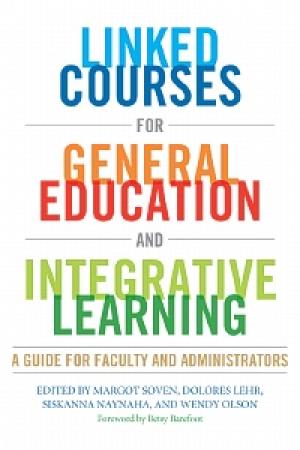
Click Here for Book Review Abstract: Research indicates that of the pedagogies recognized as “high impact”, learning communities – one approach to which, the linked course, is the subject of this book – lead to an increased level of student engagement in the freshman year that persists through the senior year, and improve retention. This book focuses on the learning community model that is the most flexible to implement in terms of scheduling, teacher collaboration, and design: the linked course. The faculty may teach independently or together, coordinating syllabi and assignments so that the classes complement each other, and often these courses are linked around a particular interdisciplinary theme. Creating a cohort that works together for two paired courses motivates students, while the course structure promotes integrative learning as students make connections between disciplines. This volume covers both “linked courses” in which faculty may work to coordinate syllabi and assignments, but teach most of their courses separately, as well as well as “paired courses” in which two or more courses are team taught in an integrated program in which faculty participate as learners as well as teachers. Part One, Linked Course Pedagogies, includes several case studies of specific linked courses, including a study skills course paired with a worldview course; a community college course that challenges students’ compartmentalized thinking; and a paired course whose outcomes can be directly compared to parallel stand-alone courses. Part Two, Linked Course Programs, includes a description of several institutional programs representing a variety of linked course program models. Each chapter includes information about program implementation, staffing logistics and concerns, curriculum development, pedagogical strategies, and faculty development. Part Three, Assessing Linked Courses, highlights the role of assessment in supporting, maintaining, and improving linked course programs by sharing assessment models and describing how faculty and administrators have used particular assessment practices in order to improve their linked course programs. (From the Publisher)
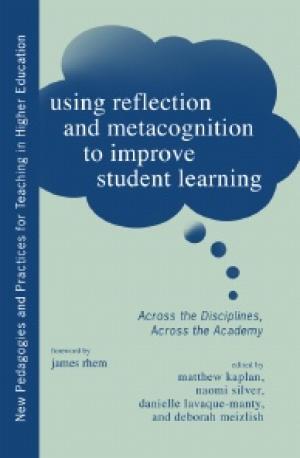
Click Here for Book Review Abstract: Research has identified the importance of helping students develop the ability to monitor their own comprehension and to make their thinking processes explicit, and indeed demonstrates that metacognitive teaching strategies greatly improve student engagement with course material. This book -- by presenting principles that teachers in higher education can put into practice in their own classrooms -- explains how to lay the ground for this engagement, and help students become self-regulated learners actively employing metacognitive and reflective strategies in their education. Key elements include embedding metacognitive instruction in the content matter; being explicit about the usefulness of metacognitive activities to provide the incentive for students to commit to the extra effort; as well as following through consistently. Recognizing that few teachers have a deep understanding of metacognition and how it functions, and still fewer have developed methods for integrating it into their curriculum, this book offers a hands-on, user-friendly guide for implementing metacognitive and reflective pedagogy in a range of disciplines. Offering seven practitioner examples from the sciences, technology, engineering and mathematics (STEM) fields, the social sciences and the humanities, along with sample syllabi, course materials, and student examples, this volume offers a range of strategies for incorporating these pedagogical approaches in college classrooms, as well as theoretical rationales for the strategies presented. By providing successful models from courses in a broad spectrum of disciplines, the editors and contributors reassure readers that they need not reinvent the wheel or fear the unknown, but can instead adapt tested interventions that aid learning and have been shown to improve both instructor and student satisfaction and engagement. (From the Publisher)
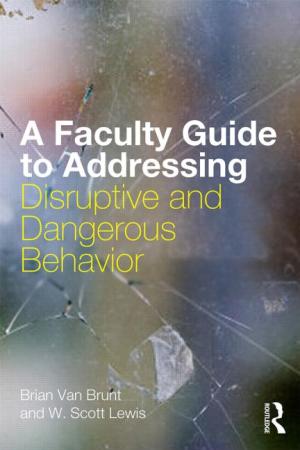
Click Here for Book Review Abstract: College and university faculty are asked to serve an increasingly diverse and at-risk population of students. They face disruptive and dangerous behaviors that range from speaking out of turn or misusing technology, to potentially agressive behavior. A Faculty Guide to Addressing Disruptive and Dangerous Behavior provides the practical ideas and guidance necessary to manage and mitigate these behaviors. Grounded in research and theory that addresses the interplay of mental health, substance abuse, and aggression that may enter the college classroom, this accessible book serves as a necessary guide for busy faculty members facing challenging situations in their classrooms. Special features include: Vignettes from seasoned faculty that provide thoughtful reflections and advice from everyday experience. Research-based suggestions and intervention techniques to help faculty better assess, intervene, and manage difficult behavior. Coverage of special populations, including nontraditional, veteran, and millennial students. Discussion of the latest laws and regulations that should affect and inform faculty’s decisions. (From the Publisher)
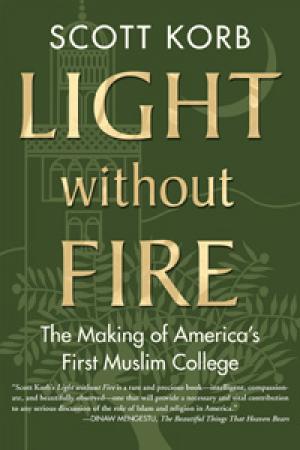
In the fall of 2010, anti-Muslim furor in the United States reached a breaking point, capping a decade in which such sentiment had surged. Loud, angry crowds gathered near New York's Ground Zero to protest plans to build an Islamic cultural center, while a small-time Florida minister appeared on national television almost nightly promising to celebrate the anniversary of 9/11 with the burning of Korans. At the same time, fifteen devout Muslims quietly gathered in a basement in Berkeley, California, to execute a plan that had been coming together for over a decade: to found Zaytuna College, "Where Islam Meets America." It would be the nation's first four-year Muslim liberal arts college, its mission to establish a thoroughly American, academically rigorous, and traditional indigenous Islam. In Light without Fire, Scott Korb tells the story of the school's founders, Sheikh Hamza Yusuf and Imam Zaid Shakir, arguably the two most influential leaders in American Islam, "rock stars" who, tellingly, are little known outside their community. Korb also introduces us to Zaytuna's students, young American Muslims of all stripes who admire—indeed, love—their teachers in ways college students typically don't and whose stories, told for the first time, signal the future of Islam in this country. From a heady theology classroom to a vibrant storefront mosque, from the run-down streets Oakland to grand ballrooms echoing with America's most powerful Muslim voices, Korb follows Zaytuna's students and teachers as they find their place and their voice. He ultimately creates an intimate portrait of the school and provides a new introduction to Islam as it is being lived and re-envisioned in America. It's no exaggeration to say that here, at Zaytuna, are tomorrow's Muslim leaders. (From the Publisher)
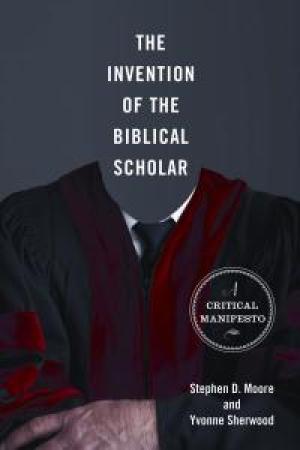
What is a "biblical scholar"? Stephen D. Moore and Yvonne Sherwood provide a thoroughly defamiliarizing and frequently entertaining re–description of this peculiar academic species and its odd disciplinary habitat. The modern—and —biblical scholar, they argue, is a product of the Enlightenment. Even when a biblical scholar imagines that she is doing something else entirely (something confessional, theoretical, literary, or even postmodern), she is sustaining Enlightened modernity and its effects. This study poses questions for scholars across the humanities concerned with the question of the religious and the secular. It also poses pressing questions for scholars and students of biblical interpretation: What other forms might biblical criticism have taken? What untried forms might biblical criticism yet take? (From the Publisher)
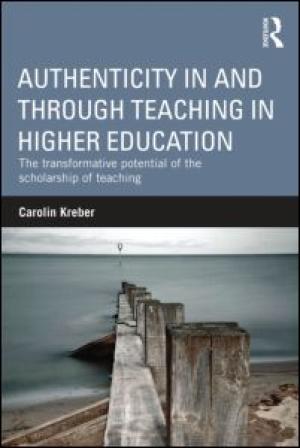
Click Here for Book Review Abstract: What does it mean to be authentic? Why should it matter whether or not we become more authentic? How might authenticity inform and enhance the social practice of the scholarship of university teaching and, by implication, the learning and development of students? Authenticity in and through Teaching introduces three distinct perspectives on authenticity, the existential, the critical and the communitarian, and shows what moving towards greater authenticity involves for teachers and students when viewed from each of these angles. In developing the notion of ‘the scholarship of teaching as an authentic practice', this book draws on several complementary ideas from social philosophy to explore the nature of this practice and the conditions under which it might qualify as 'authentic'. Other concepts guiding the analysis include ‘virtue’, 'being', ‘communicative action’, 'power', ‘critical reflection’ and ‘transformation’. Authenticity in and through Teaching also introduces a vision of the scholarship of teaching whose ultimate aim it is to serve the important interests of students. These important interests, it is argued, are the students’ own striving and development towards greater authenticity. Both teachers and students are thus implicated in a process of transformative learning, including objective and subjective reframing, redefinition and reconstruction, through critical reflection and critical self-reflection on assumptions. It is argued that, in important ways, this transformative process is intimately bound up with becoming more authentic. Rather than being concerned principally with rendering research evidence of ‘what works’, the scholarship of teaching emerges as a social practice that is equally concerned with the questions surrounding the value, desirability and emancipatory potential of what we do in teaching. The scholarship of teaching, therefore, also engages with the bigger questions of social justice and equality in and through higher education. The book combines Carolin Kreber's previous research on authenticity with earlier work on the scholarship of teaching, offering a provocative, fresh and timely perspective on the scholarship of university teaching and professional learning. (From the Publisher)
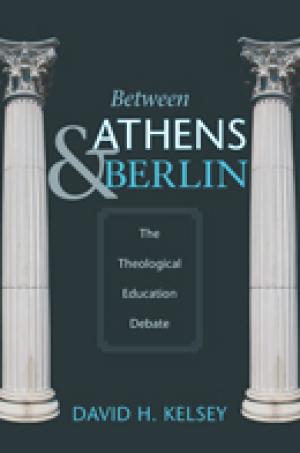
The 1980s produced an unprecedented large amount of literature and a vigorous debate on the purpose and nature of theological education in North America. Surveying and probing the major positions in this debate, David H. Kelsey argues in this book that the central differences between various voices in theological education emerge most clearly when viewed in light of "Athens" and "Berlin." For Kelsey, "Athens" and "Berlin" represent two very different—and ultimately irreconcilable—models of excellent education. In the case of de facto, says Kelsey, that modern North American theological education, for historical reasons, is committed to both models, resulting in ongoing tensions and struggles. Kelsey shows how a variety of significant thinkers—Newman, Niebuhr, Farley, Stackhouse, and several others—fit in the Athens-Berlin framework. In presenting a keen analysis of major themes and patterns of movement in the theological education debate, Between Athens and Berlin itself makes a significant contribution to the debate. (From the Publisher)
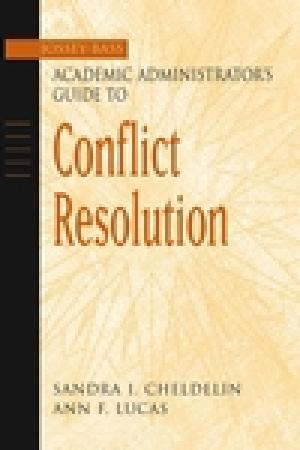
Dealing with conflict is an evitable part of any academic administrator’s job. Often, however, new administrators lack the skills they need to successfully resolve campus conflicts. This important resource includes an array of strategies for identifying and managing conflict between individuals, within a department, and between departments. The Jossey-Bass Academic Administrator’s Guide to Conflict Resolution shows how to turn conflicts into problems to be solved. Authors Sandra I. Cheldelin and Ann F. Lucas offer concrete approaches academic administrators can use to analyze conflicts and design effective interventions. The Jossey-Bass Academic Administrator’s Guide to Conflict Resolution is an invaluable tool that includes · Guidelines for knowing when it is appropriate to intervene in a conflict · Strategies for helping to change irrational and negative thinking to positive rational thought · Methods for handling interpersonal conflict—between two parties—within a department · An outline of the major approaches for managing conflict and information about when they work and when they don’t · Effective strategies for preventing and solving specific problems (From the Publisher)
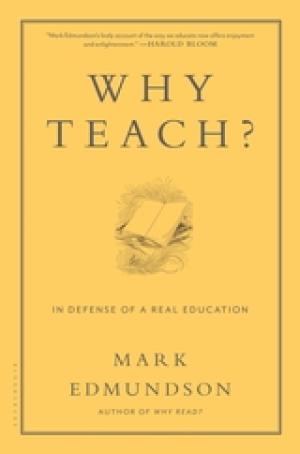
Click Here for Book Review Abstract: Mark Edmundson's essays reclaim college not as the province of high-priced tuition, career training, and interactive online courses, but as the place where serious people go to broaden their minds and learn to live the rest of their lives. A renowned professor of English at the University of Virginia, Edmundson has felt firsthand the pressure on colleges to churn out a productive, high-caliber workforce for the future. Yet in these essays, many of which have run in places such as Harper's and the New York Times, he reminds us that there is more to education than greater productivity. With prose exacting yet expansive, tough-minded yet optimistic, Edmundson argues forcefully that the liberal arts are more important today than ever. Why Teach? offers Edmundson's collected writings on the subject, including several pieces that are new and previously unpublished. What they show, collectively, is that higher learning is not some staid, old notion but a necessary remedy for our troubled times. Why Teach? is brimming with the wisdom and inspiration that make learning possible. (From the Publisher)
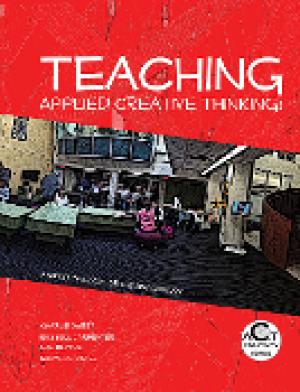
Click Here for Book Review Abstract: The authors of Teaching Applied Creative Thinking: A New Pedagogy for the 21st Century believe this book to be the first in the field about teaching creative thinking in the new millennium. While many books talk about creativity and provide the justification for adding creative thinking as a student learning outcome, this book focuses on applying creativity to the teaching and learning process. The authors ask, “does anyone truly believe the world’s problems are going to be solved by students with only a high proficiency in common core competencies?” With student learning outcomes as a goal, we must rethink teaching and learning to include creativity. Posed for the 21st-Century learner, their new paradigm, Mentor-from-the-Middle, replicates scholarly inquiry by developing a scholarly frame of mind. The teacher assumes new roles in this paradigm of scholar, mentor, facilitator, coach, model, and critical reflector. These roles in turn combine to help transform the learner into an active creative thinker. "The authors’ goals in writing this book are to fill a void, to transform teaching, to create a new model, and to develop a new approach to teaching and learning. In the old world, before the coming of Google, the transfer of knowledge was the work of the teacher; now knowledge is available at the tip of our fingers. But the Google cannot solve the world’s problems. We will always need great teachers to transform and synthesize knowledge into skills, to teach creative thinking, to apply learning, and to create a love for learning that lasts a lifetime. The authors discuss new brain research, advanced technologies, the teaching environment, and pedagogy. They synthesize this knowledge in a wonderful way to encourage the reader to think deeply about how this research might affect the teacher and the learner. (From the Publisher)